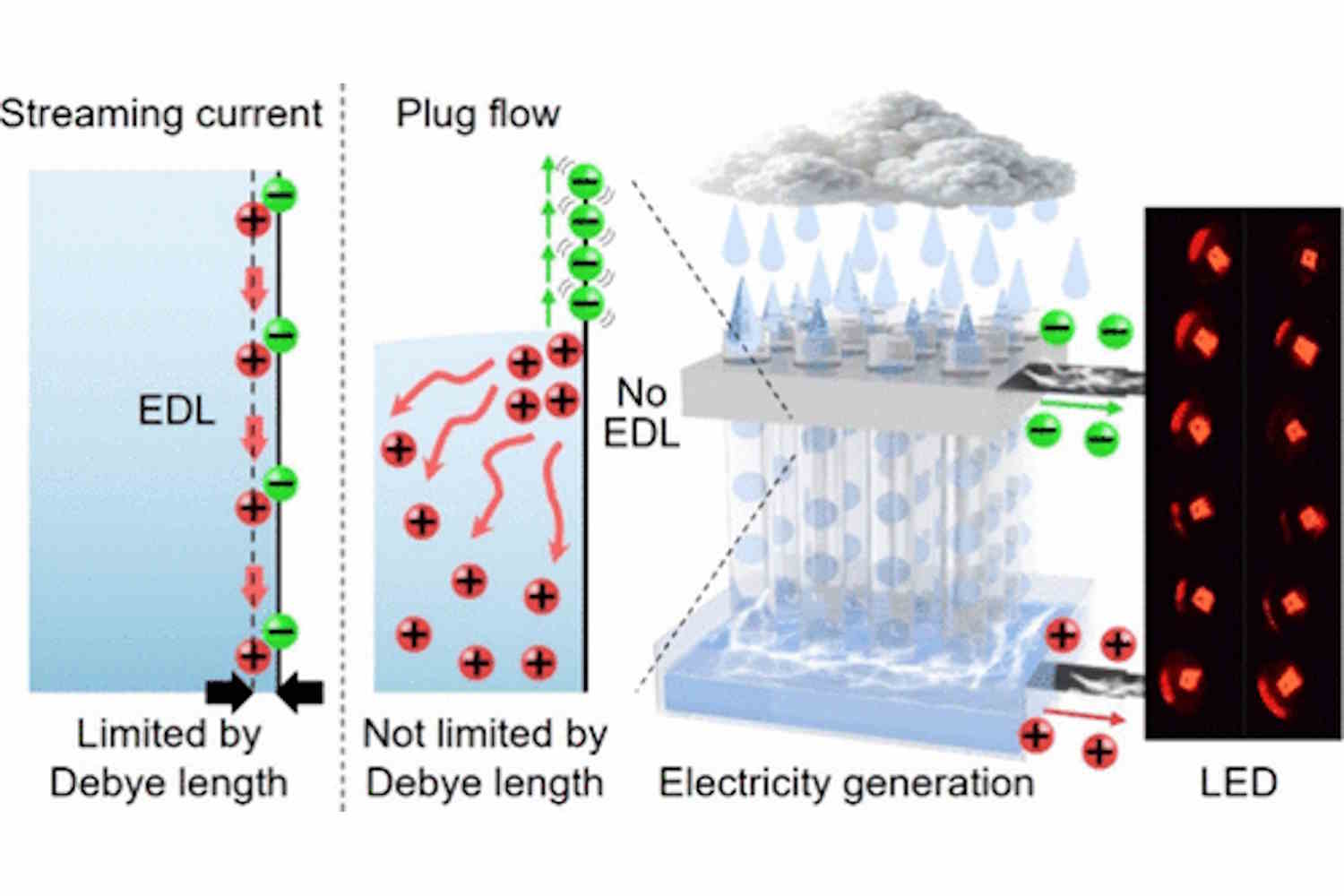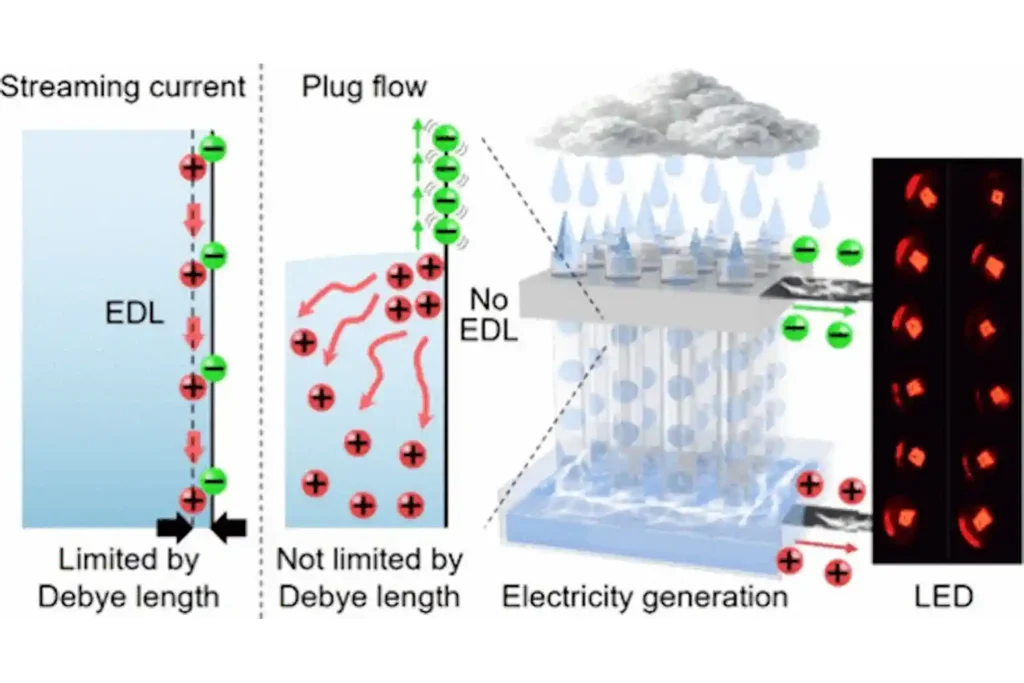A team of scientists from Singapore has developed a new technology that turns raindrops into electricity: the system uses a plastic tube and a flow called plug flow to generate clean energy in urban contexts

A team of researchers in Singapore has developed a surprisingly simple yet groundbreaking technology: generating electricity from rainfall using nothing more than a thin plastic tube and a special kind of water flow known as plug flow.
It might look like a basic plumbing setup, but it works like a natural battery powered by rain. According to a study from the National University of Singapore, the team led by Professor Siowling Soh demonstrated that a plastic tube just 12.6 inches long and 0.08 inches wide can generate electricity as raindrops pass through it. The key lies in how the water moves: not in a continuous stream, but as separate droplets divided by air pockets, forming what’s called a plug flow.
In this intermittent flow, each “plug” of water sliding through the inner surface of the tube creates a separation of electric charges through a phenomenon known as contact electrification. It’s the same principle behind a balloon sticking to your hair: when two materials come into contact, they exchange electric charges. In this case, the water’s contact with the tube’s inner coating builds up opposite charges at either end. Metal wires connected to both ends capture this charge, producing usable electricity.
“The rain is abundant and free. We just need to learn how to use it better.”
The so-called “rain battery” doesn’t need rivers or waterfalls to work—gravity and steady rain are enough, like the kind that falls on rooftops. In lab tests, the system powered 12 LED bulbs for 20 seconds using four tubes in parallel.
Unlike hydroelectric dams, which need massive infrastructure and specific geographic features, this system is ideal for urban settings. It can be mounted on rooftops or installed in rainy areas where traditional renewable sources are impractical. According to Soh, the potential is huge.
A breakthrough in electrochemistry: beyond the Debye length
One of the most intriguing aspects of this tech is its ability to overcome a historic barrier in electrochemistry. Previously, energy devices relying on liquid-solid contact were limited by the so-called Debye length—a tiny zone where electric charge separation occurs. This region is usually too small to generate any significant power, especially in channels wider than 0.0004 inches.
But the plug flow sidesteps this limitation entirely. Thanks to the intermittent nature of the water movement, charge buildup occurs far beyond the Debye length. The result? Over 10% energy conversion efficiency and a power density of about 100 watts per square meter—a performance 100,000 times better than previous streaming current systems.

Not hydroelectric, not solar—this is triboelectric
This innovative method doesn’t use turbines like hydroelectric systems, and it doesn’t rely on sunlight. Instead, it falls into the category of triboelectric generators, which create energy through friction, bending, or—in this case—the flow of water droplets.
So far, most triboelectric technologies have struggled with efficiency and scalability. But this minimalist and elegant solution could turn rainfall into a steady source of urban power, complementing other renewables.
Real rain may generate even more power
The researchers tested the system with various types of water—tap, saltwater, hot, and cold—and it worked in all cases. But here’s the twist: natural raindrops fall at higher terminal velocities than those simulated in the lab. That means the energy output could be even greater in real-world conditions.
This discovery could also shed light on atmospheric phenomena like the Lenard effect, which explains the negative air charge near waterfalls or ocean waves. According to the team, nature may already be creating plug flows spontaneously through splashes, sprays, and droplets.
Although the prototype is still in its experimental phase, the results are extremely promising. The next step is to test the system’s long-term durability, weather resistance, and compatibility with existing infrastructure.
Source: ACS Central Science
